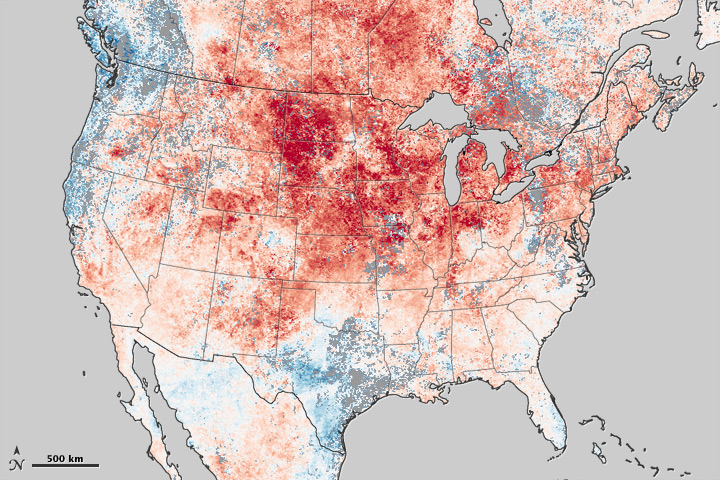
Credit: NASA Earth Observatory image by Jesse Allen, using data from the Level 1 and Atmospheres Active Distribution System (LAADS).
As we woke up this week to the vernal equinox and the first full, official day of spring, many across Western North Carolina are dealing with an early spring that seems to have gone haywire. From tornado outbreaks in early March, to torrential downpours in the South, and heat waves in the north — so far, March has been one for the record books, including a long-lived ridge of high pressure over the Eastern U.S. that has brought numerous record high temperatures to the Eastern and Central U.S. and Canada.
The map above shows land surface temperature anomalies based on data from the Moderate Resolution Imaging Spectroradiometer (MODIS) instrument on the Terra satellite – showing temperatures compared to the average of the same eight day period of March from 2000-2011. Areas with warmer than average temperatures are shown in red; near-normal temperatures are white; and areas that were cooler than the 2000-2011 base period are blue.
It’s no surprise that WNC is shown as above normal during this time period, as our high temperatures so far this month have been well above average. Only four of the last 20 days in Asheville have been below average for the recorded high temperature! But it’s hard to find anyone around here complaining about the weather. Our memories of the winters of 2009-2010 and 2010-2011 are still too vivid (very cold and snowy).
The Institute’s class on Aviation Weather Safety is next week, Thursday March 29. Click here for more information.
Click here for more information on the map.



It is hard to grumble about this nice warm weather and early spring. So far so good. However if we get a hard freeze now after so many plants have broken dormancy there could be much wailing and gnashing of teeth. A hard freeze now could cause billions in damage to agricultural crops and home landscapes. It could also damage much native vegetation that wildlife depends upon for food and survival.
And this sort of ‘false spring’ appears to be getting more and more pronounced over the past decade.
If this continues on this trajectory for a few more years, we will likely see enormous damage.